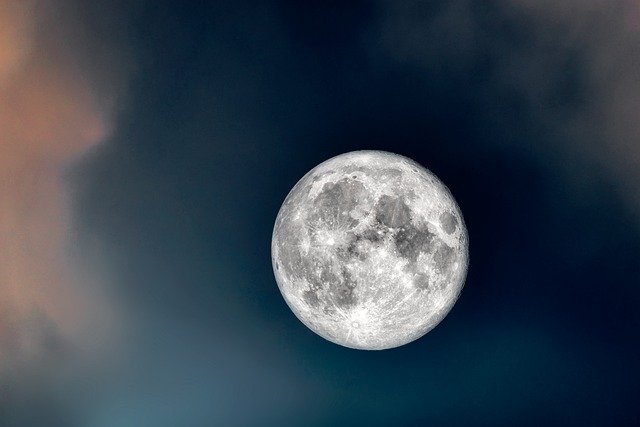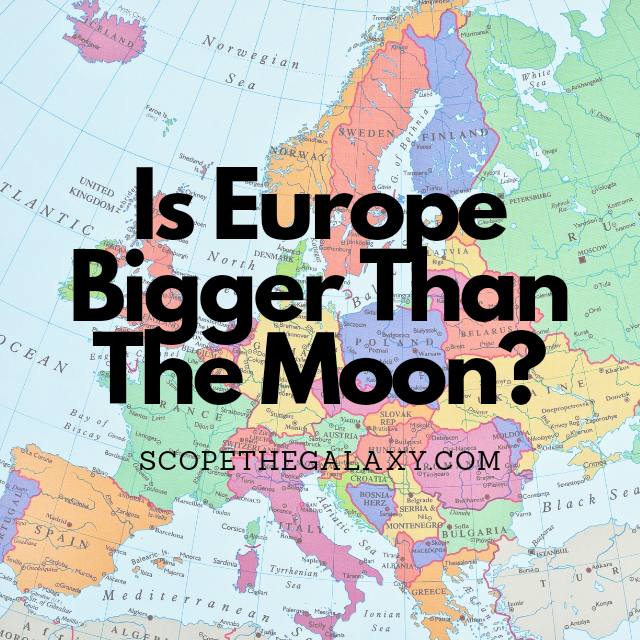*This post may contain affiliate links. This means we may make a commission if you purchase an item using one of our links*
Europe is the second smallest continent on Earth, whilst the Moon is the fifth largest natural satellite in our solar system. Still, there’s no comparison regarding which one is bigger as the former is a flat land mass with a surface area of 10.53 million square kilometers and a volume of 420 million cubic kilometers while the Moon is a spherical body with a surface area of 37.9 million square kilometers and a volume of 21.97 billion cubic kilometers.
For a more detailed look at what makes Europe and the Moon as big as they are, continue reading as it will be covered in more details below.
How Big Is Europe?

Europe is technically considered the second smallest continent in the world, only beaten by Australia. Europe comprises the far west projecting peninsula of Eurasia, a landmass it shares with Asia, and the small continent makes up 2% of the earth’s surface.
Europe’s territory can be tricky to pinpoint. But we will do our best to explain it for you; the Artic ocean borders its to its North and the Atlantic Ocean lies to its West. To the South lies the Mediterranean and Black seas, the Kuma Manych Depression, the Caspian sea, the Ural mountains, and the Zhem River divide it from Asia.
From north to south, Europe covers an area of 3,341 kilometers and spreads approximately 2,154 from east to west. However, because it is an irregular shape, these measurements, when totaling the circumference to find out the land mass, you end up with a greater number; Europe covers a total landmass of 10.53 million square km.
Europe’s coastline is full of seas, fjords, and bays and runs for approximately 38,000 km. It has several islands, including Iceland, Ireland, the British Isles, Sardinia, Malta, Crete, and Cyprus.
As Europe is a continent, it comprises various countries, each with its borders. Some of the largest countries in Europe and their landmasses include France, with 547,030 square kilometers; Sweden, with 449,964 square kilometers, Ukraine, with 603,700 square kilometers; and Poland, with 312,685 square kilometers.
As a result it overall volume if say the average crust across all of the countries present within in it were to 40km, would be 420 million cubic kilometers.
How Big Is The Moon?

The moon has a surface area of 37,936,695 sq. km, which is over 10 times the area of India. While this celestial body may appear to be a perfect sphere, it is an oblate spheroid which means that the diameter is slightly less when you measure it pole to pole instead of across the equator.
The moon’s volume, when we look at its entire body, is 21,971,669,064 cubic kilometers. The crust is thicker than the Earth’s crust, which is pretty significant if you’re comparing the size of these two bodies. The moon’s crust is between 60 and 100 kilometers thick.
Even if we take the moon’s crust at its thinnest, the total area tops two billion cubic kilometers, which is still significantly bigger than the volume of Europe. .
Viewing the moon, you can see the mix of dark lunar plains and bright mountainous highlands. Early observations led scientists to believe that the dark areas could represent water, but we have since discovered that there is no water on this airless surface.
Earth mountains are created through tectonic or volcanic action. In comparison, the moon’s mountainous ranges formed almost exclusively from the impact of crater collisions.
There are three significant mountain ranges on the moon: the Montes Caucasus and Montes Apenninus create a barrier between the Sea of Serenity and the Sea of Showers. And in the northwest, the Plato crater is encased by the Montes Alpes (lunar Alps).
Summary
Europe is the second smallest continent on Earth while the Moon is the 5th biggest moon in our solar system and is bigger in almost every metric.
In regards to surface area, it is just under 4 times bigger and in regards to volume, it is around 50 times larger, which makes sense considering the Moon is spherical in nature.

